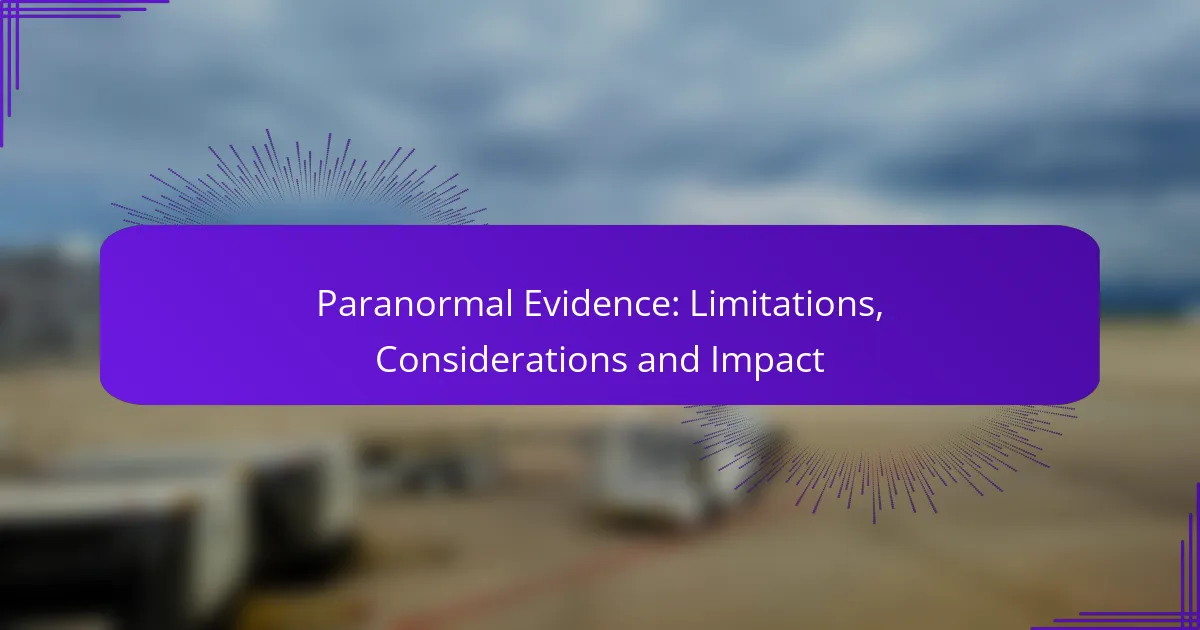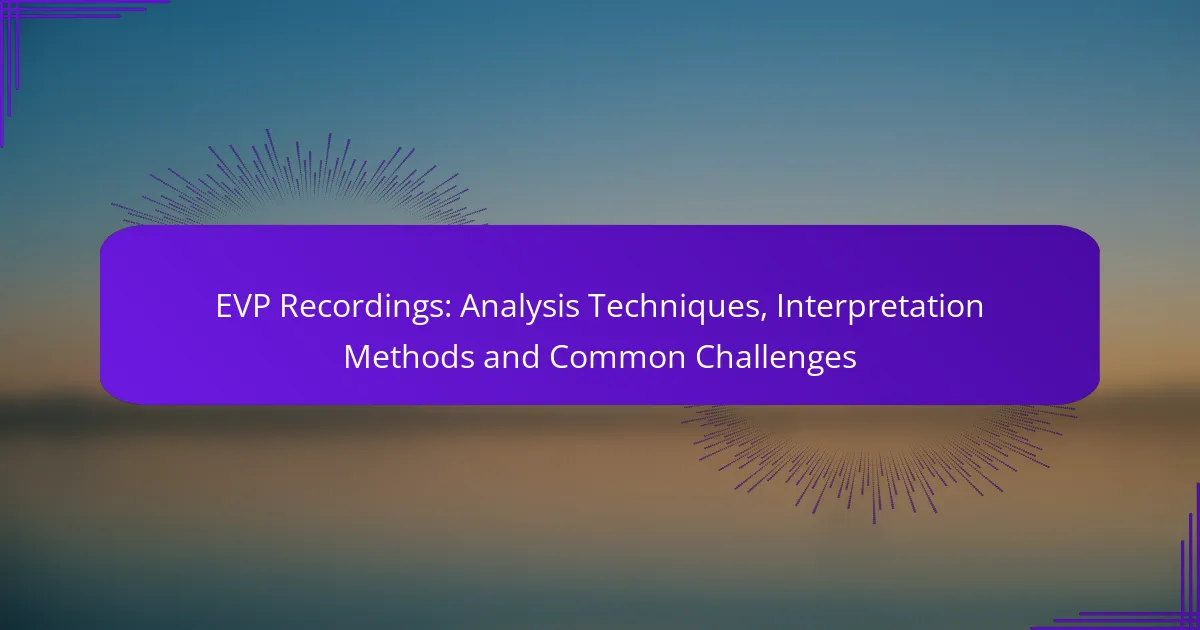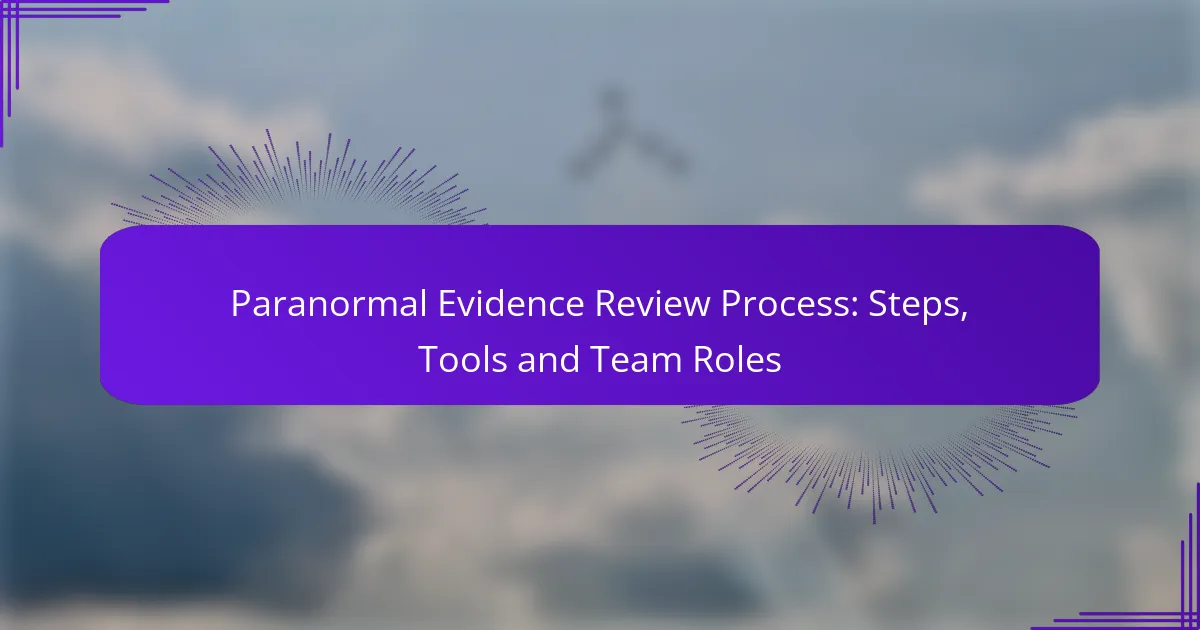Presenting paranormal evidence requires a thoughtful approach that combines effective strategies with audience engagement to enhance clarity. By utilizing multimedia tools, storytelling techniques, and interactive experiences, presenters can create a deeper connection with their audience. Ensuring that content is structured logically and communicated clearly is essential for helping viewers retain key information and fully appreciate the evidence being shared.

What strategies enhance paranormal evidence presentation?
Effective strategies for presenting paranormal evidence include utilizing multimedia tools, incorporating storytelling techniques, engaging the audience, leveraging social media, and implementing live demonstrations. These approaches enhance clarity and foster a deeper connection with the audience.
Utilizing multimedia tools
Multimedia tools such as videos, audio recordings, and images can significantly enhance the presentation of paranormal evidence. They provide a richer context, allowing the audience to experience the evidence more vividly.
When using multimedia, ensure that the quality is high and the content is relevant. For example, a well-edited video of a ghost hunt can be more compelling than a simple slideshow of images.
Incorporating storytelling techniques
Storytelling techniques can make paranormal evidence more relatable and engaging. By framing the evidence within a narrative, presenters can capture the audience’s attention and evoke emotional responses.
Consider structuring your presentation like a story, with a clear beginning, middle, and end. This could involve introducing the location, describing the events that took place, and then presenting the evidence that supports the narrative.
Engaging audience interaction
Engaging the audience through interaction can enhance their investment in the presentation. Techniques such as Q&A sessions, polls, or live demonstrations encourage participation and make the experience more memorable.
For instance, asking the audience to share their own paranormal experiences can create a sense of community and make the presentation feel more personal.
Leveraging social media platforms
Social media platforms are powerful tools for sharing paranormal evidence and reaching a broader audience. Platforms like Instagram, Facebook, and TikTok allow for quick dissemination of content and can generate discussions around the evidence presented.
Utilize hashtags and engage with followers to build a community interested in paranormal topics. Regular updates and behind-the-scenes content can keep your audience engaged and eager for more.
Implementing live demonstrations
Live demonstrations can provide a dynamic way to present paranormal evidence. They allow the audience to witness the evidence in real-time, which can be more impactful than static presentations.
Consider conducting a live investigation or using equipment like EVP recorders during a presentation. This not only showcases the evidence but also involves the audience in the experience, making it more interactive and exciting.
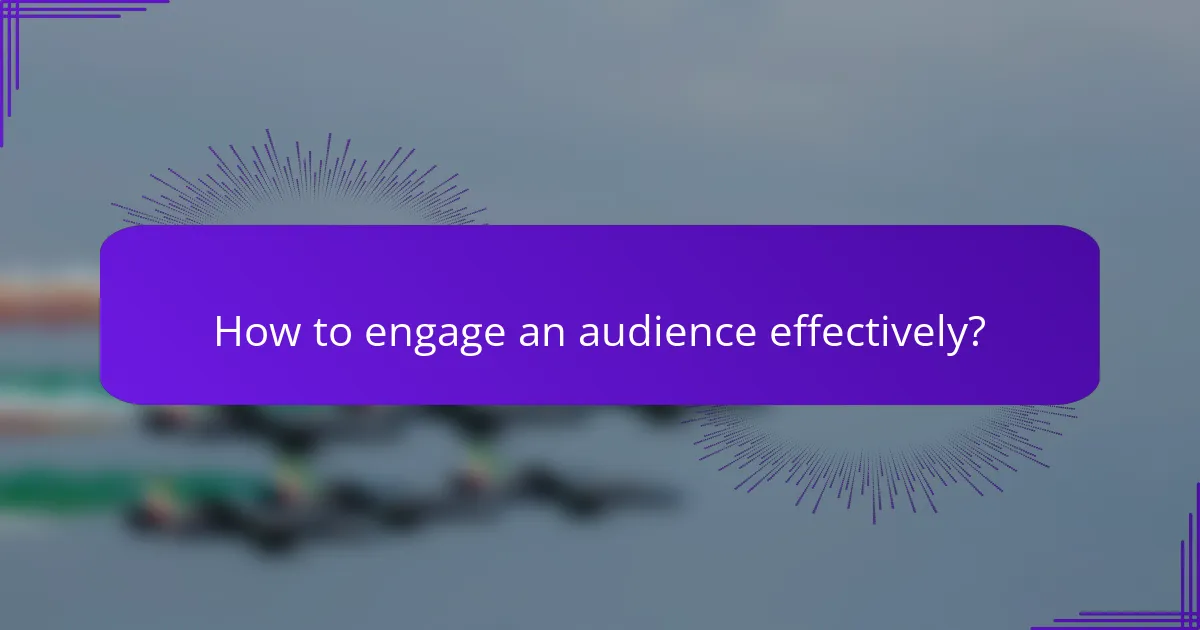
How to engage an audience effectively?
Engaging an audience effectively involves creating a connection through interactive and immersive experiences. This can be achieved by encouraging participation, utilizing feedback, and ensuring clarity in the presentation of paranormal evidence.
Creating immersive experiences
Immersive experiences draw the audience into the paranormal narrative, making them feel part of the story. Use multimedia elements like videos, sound effects, and visuals to enhance the atmosphere and evoke emotions.
Consider setting the scene with dim lighting or thematic decor that aligns with the paranormal topic. For instance, if discussing ghost sightings, a haunted house setting can heighten engagement and interest.
Encouraging audience participation
Encouraging participation transforms passive viewers into active contributors, enhancing their investment in the experience. Techniques such as live polls, Q&A sessions, or hands-on activities can foster interaction.
For example, invite the audience to share their own paranormal experiences or beliefs during the presentation. This not only keeps them engaged but also creates a community atmosphere where shared stories can deepen the discussion.
Utilizing feedback mechanisms
Feedback mechanisms are essential for understanding audience reactions and improving future presentations. Use tools like surveys or comment cards to gather insights on what resonated and what could be improved.
Additionally, consider real-time feedback options, such as social media interactions or live chat features, to gauge audience sentiment during the event. This immediate input can help tailor the experience on the fly and make adjustments as needed.

What are the best practices for clarity in presentations?
To ensure clarity in presentations, focus on structuring your content logically, using clear visuals, and employing straightforward language. These practices help your audience easily follow your message and retain key information.
Structuring content logically
A logical structure is essential for clarity in presentations. Start with a clear introduction that outlines your main points, followed by a well-organized body that expands on each point in a coherent manner. Conclude with a summary that reinforces your key messages.
Consider using a simple outline format: Introduction, Main Points (with sub-points), and Conclusion. This approach helps the audience anticipate the flow of information and understand how each part relates to the overall topic.
Using clear visuals and graphics
Visual aids can significantly enhance understanding and retention of information. Use high-quality images, charts, and graphs that directly support your content. Ensure that visuals are not overly complex and are easy to interpret at a glance.
Limit the amount of text on slides and focus on key points. A good rule of thumb is to use no more than six words per line and six lines per slide. This keeps the audience engaged and allows them to absorb the information without feeling overwhelmed.
Employing straightforward language
Using straightforward language is crucial for effective communication. Avoid jargon and technical terms unless they are necessary and well-explained. Aim for a conversational tone that makes your content accessible to a broad audience.
When presenting complex ideas, break them down into simpler concepts. Use analogies or relatable examples to clarify difficult points. This approach not only aids understanding but also keeps the audience interested and engaged throughout your presentation.

What tools can enhance paranormal evidence presentation?
Utilizing specific tools can significantly improve the presentation of paranormal evidence, making it more engaging and clear for the audience. Key tools include video editing software, audio enhancement tools, and presentation software, each serving unique purposes in showcasing evidence effectively.
Using video editing software
Video editing software allows for the enhancement of visual content by adding effects, transitions, and annotations. Programs like Adobe Premiere Pro or Final Cut Pro can help create a polished final product that captures the audience’s attention.
When editing, focus on clarity and pacing. Aim for concise clips that highlight key moments, ideally keeping each segment under a few minutes. Avoid excessive effects that may distract from the evidence itself.
Employing audio enhancement tools
Audio enhancement tools can improve the clarity of sounds captured during paranormal investigations. Software like Audacity or Adobe Audition can help remove background noise, amplify faint sounds, and adjust frequencies for better listening experiences.
When working with audio, ensure that the enhancements do not alter the original context of the sounds. Aim for a balance between clarity and authenticity, and consider using a checklist to identify key audio elements that need enhancement.
Utilizing presentation software
Presentation software, such as Microsoft PowerPoint or Google Slides, can effectively organize and display paranormal evidence. These tools allow for the integration of images, videos, and text in a structured format that guides the audience through the evidence.
When creating a presentation, use bullet points for clarity and limit the amount of text on each slide. Incorporate visuals that complement the spoken narrative, and rehearse the presentation to ensure smooth transitions between slides and topics.
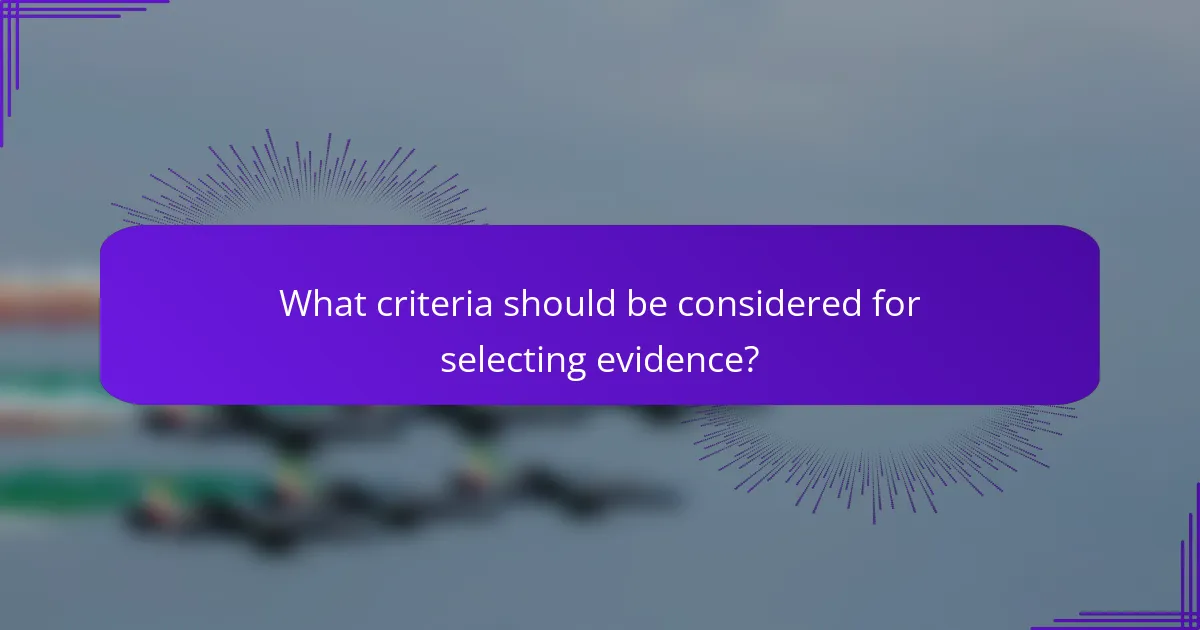
What criteria should be considered for selecting evidence?
When selecting evidence for paranormal presentations, focus on authenticity, relevance, and clarity. These criteria ensure that the evidence resonates with the audience and maintains credibility.
Evaluating authenticity
Authenticity is crucial when presenting paranormal evidence. Verify the source of the evidence and ensure it comes from credible witnesses or reliable documentation. Look for signs of tampering or manipulation, as these can undermine the evidence’s integrity.
Consider using tools or techniques to assess the authenticity of audio or visual evidence, such as metadata analysis or software that detects alterations. Engaging experts in forensic analysis can also enhance the credibility of your findings.
Assessing relevance to the audience
Relevance to the audience is key in making paranormal evidence impactful. Tailor your evidence selection based on the interests and beliefs of your audience. For instance, if presenting to skeptics, focus on scientifically verifiable evidence rather than anecdotal accounts.
Engage your audience by using relatable examples and local folklore that resonate with their experiences. This approach not only captures attention but also fosters a deeper connection to the evidence presented.
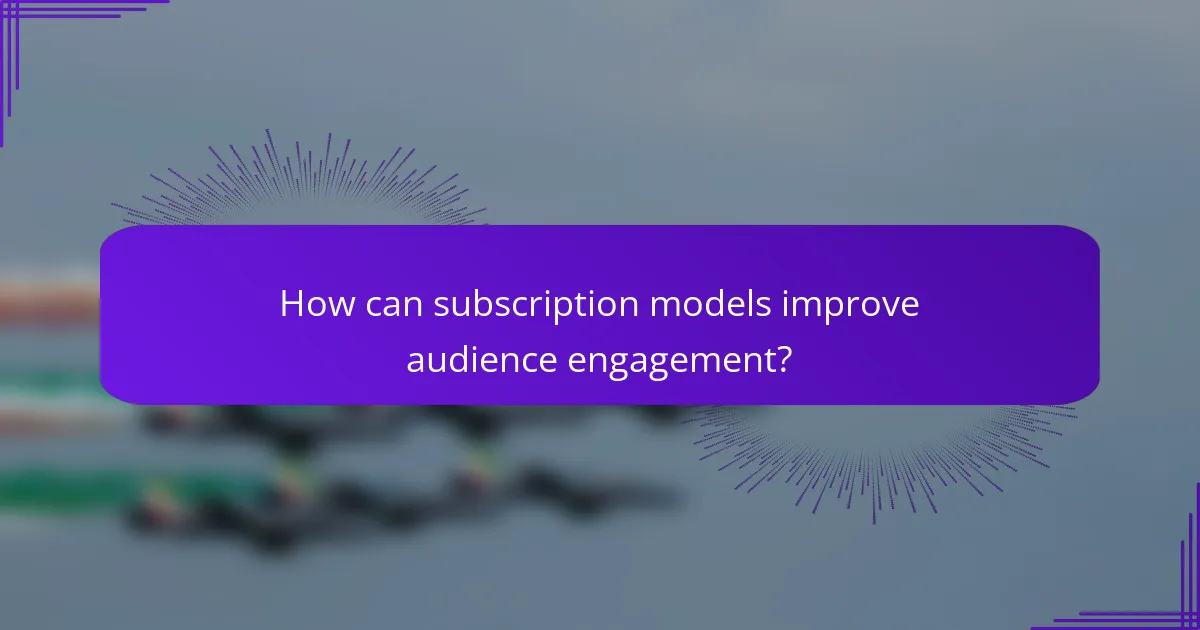
How can subscription models improve audience engagement?
Subscription models can significantly enhance audience engagement by providing consistent content delivery and fostering a sense of community. These models create a reliable revenue stream that allows creators to focus on quality content, which in turn keeps audiences more invested and involved.
Building a Community
Subscription models encourage the formation of a dedicated community around shared interests. By offering exclusive content, members feel a sense of belonging and are more likely to engage with both the content and each other. This can lead to increased interaction through comments, forums, or social media groups.
For example, platforms like Patreon allow creators to offer tiered memberships, where higher tiers grant access to special events or behind-the-scenes content. This exclusivity can motivate subscribers to participate actively, enhancing their overall experience.
Consistent Content Delivery
Regular content updates are crucial for maintaining audience interest. Subscription models facilitate this by providing a predictable schedule for content release, which helps keep subscribers engaged. Creators can plan their content calendar around subscriber preferences, ensuring that the material remains relevant and appealing.
Consider setting a monthly or bi-weekly release schedule for new content. This approach can help establish expectations and encourage subscribers to return regularly, ultimately boosting retention rates.
Feedback and Adaptation
Subscription models allow for direct feedback from the audience, which can be invaluable for content creators. Engaging with subscribers through polls, surveys, or Q&A sessions can provide insights into their preferences and interests, enabling creators to adapt their offerings accordingly.
Utilizing tools like Google Forms or social media polls can help gather feedback efficiently. This iterative process not only improves content quality but also strengthens the relationship between creators and their audience, fostering loyalty and long-term engagement.

